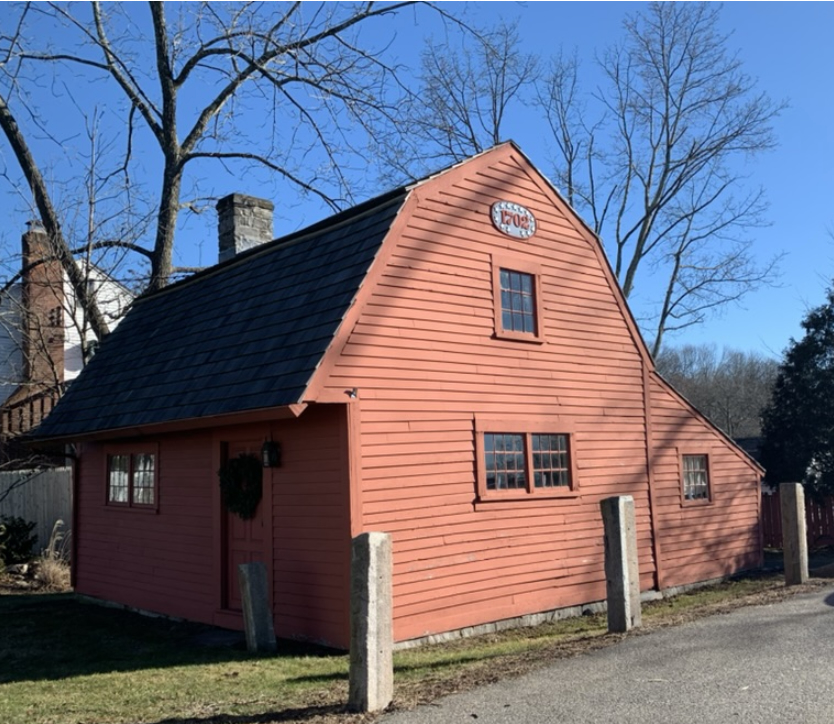F for Foote
NATHANIEL FOOTE
In 1634-35, Nathaniel Foote, Sr., of England and his family, including Nathaniel Foote, Jr., (born in Colchester, England in 1620) immigrated to New England. They were among the group of colonists who traveled to Wethersfield to settle in the Connecticut wilderness. Nathaniel Foote, Jr. was married in Wethersfield in 1646, and on January 10, 1647, he had a son, Nathaniel, III. In 1670, Nathaniel, III married Margaret Bliss of Hatfield, Massachusetts, and their son Nathaniel, IV, was born in 1682. At the age of 28 years, Nathaniel, III fought in King Philip’s War of 1675-76 and was commissioned as a Quarter Master of the Militia. After the war, Nathaniel III, lived in various towns in Massachusetts and Connecticut. By the early 1690’s, Quarter Master Nathaniel Foote III, is known to have been working to create a new settlement in Mohegan territory, in an area of Connecticut which became known as Colchester.

Nathaniel, III succeeded in contacting the Mohegans and purchasing a land grant from Owaneco, Sachem of the Mohegan tribe. Unfortunately, the details of Nathaniel, III’s meeting with Owaneco have been lost, but history reports that the grant was given to Quarter Master Foote by Owaneco, “for the consideration of love and affection.” The land was to be divided by Nathaniel, III “according to his (discretion or direction).” The payment arrangement for this huge grant has also been lost, however, one report stated the land was purchased for one red coat, 25 silver buttons and a sizable amount of rum. The total cost to Quarter Master Foote is reported to have not exceeded $1.50 in value. However, this event was followed by many years of both conflict and negotiations between the English settlers with the Mohegans.
Colchester was officially recognized by the General Assembly of the Colony of Connecticut on October 13, 1698, when the assembly accepted Foote’s grant and ordered:
“This Court upon the petition of Divers of the inhabitants of the Countie of Hartford Grant Libertye for a plantation at or near the place called Jeremiah’s farme upon the road to newlondon… beginning at the North bound of twentie mile River And So to extend Southward to a River called deep River And to extend Eastward from the bounds of Haddam and Seven Miles.”
With the acceptance of the colony leaders in 1698, Colchester was born.
The main thrust of settlement in Colchester began in 1701. Prominent families from Wethersfield, Windsor and Hartford joined together to create a new home in the wilderness. Quarter Master Nathaniel Foote, III, came to town and started construction of a homestead about 1702. But ill health prevented him from finishing the structure, and he died in Wethersfield on January 12, 1703, from “a lingering consumption,” leaving his wife, Margaret with nine children (one of whom was their oldest son, Nathaniel, IV, who was 21 years of age). His widow continued the transition to Colchester with Nathaniel, IV, three other sons and her youngest daughter.
Finding himself as the head of the family, Nathaniel, IV finished the construction of Colchester’s historic Nathaniel Foote House. The original location of the house and the old town center was about a mile north of the present Town Green where the Chanticlair golf course is today. Although moved from its original location, the Foote House still stands as a wonderful connection to one of the most important of Colchester’s town founders. With the completion of the other homesteads, fields were plowed, and barns were raised. The next few years brought serious difficulties for the settlers at Colchester, but the town was now firmly established.

The Foote family, with steady persistence, was instrumental in creating a new home, a new town and a new country. Their efforts and the efforts of many other settlers built the Colchester we know today.
(Excerpted from Local History by Kevin Tulimieri, originally published in the Hometown New Publications, 1998. See complete article in the link below.)
